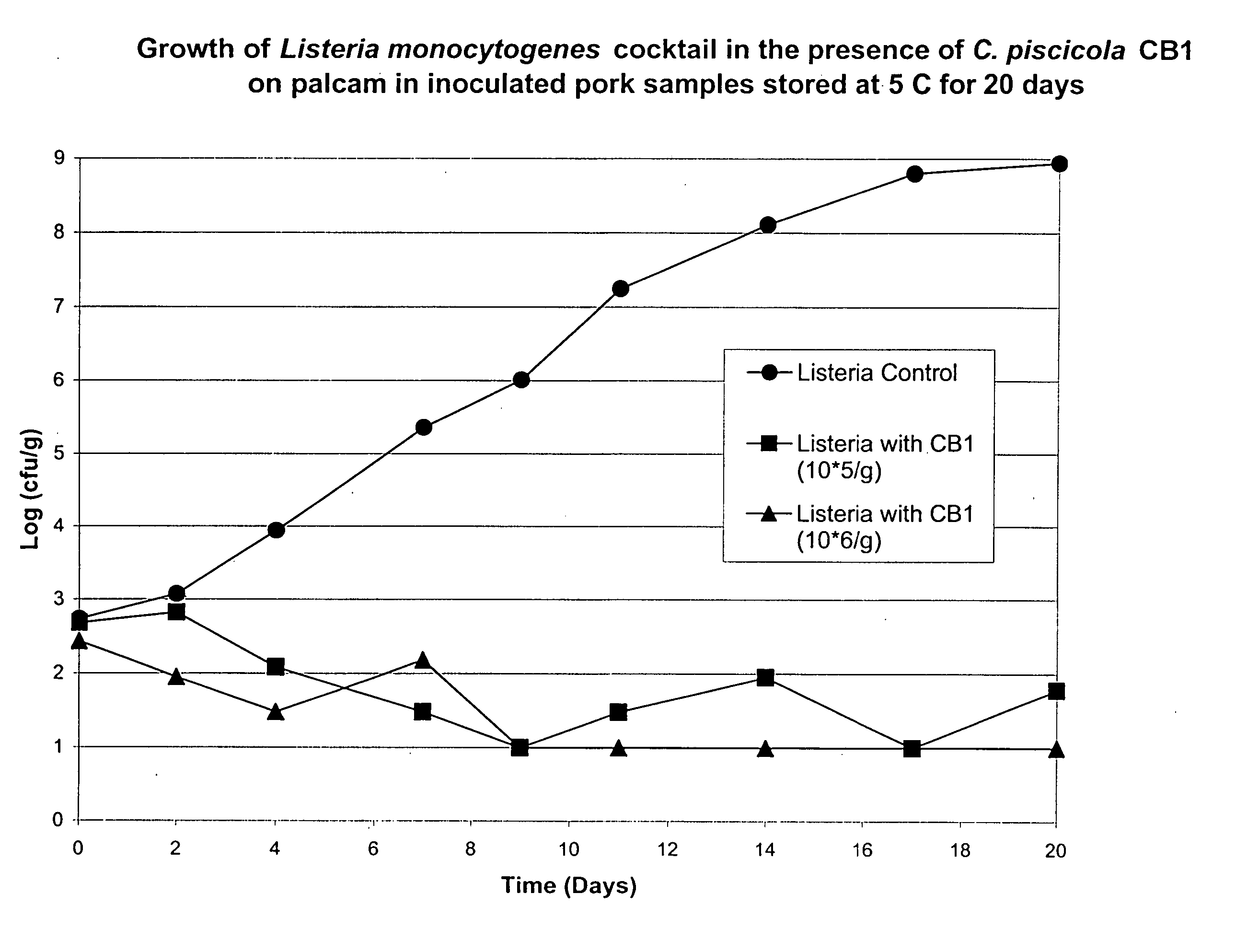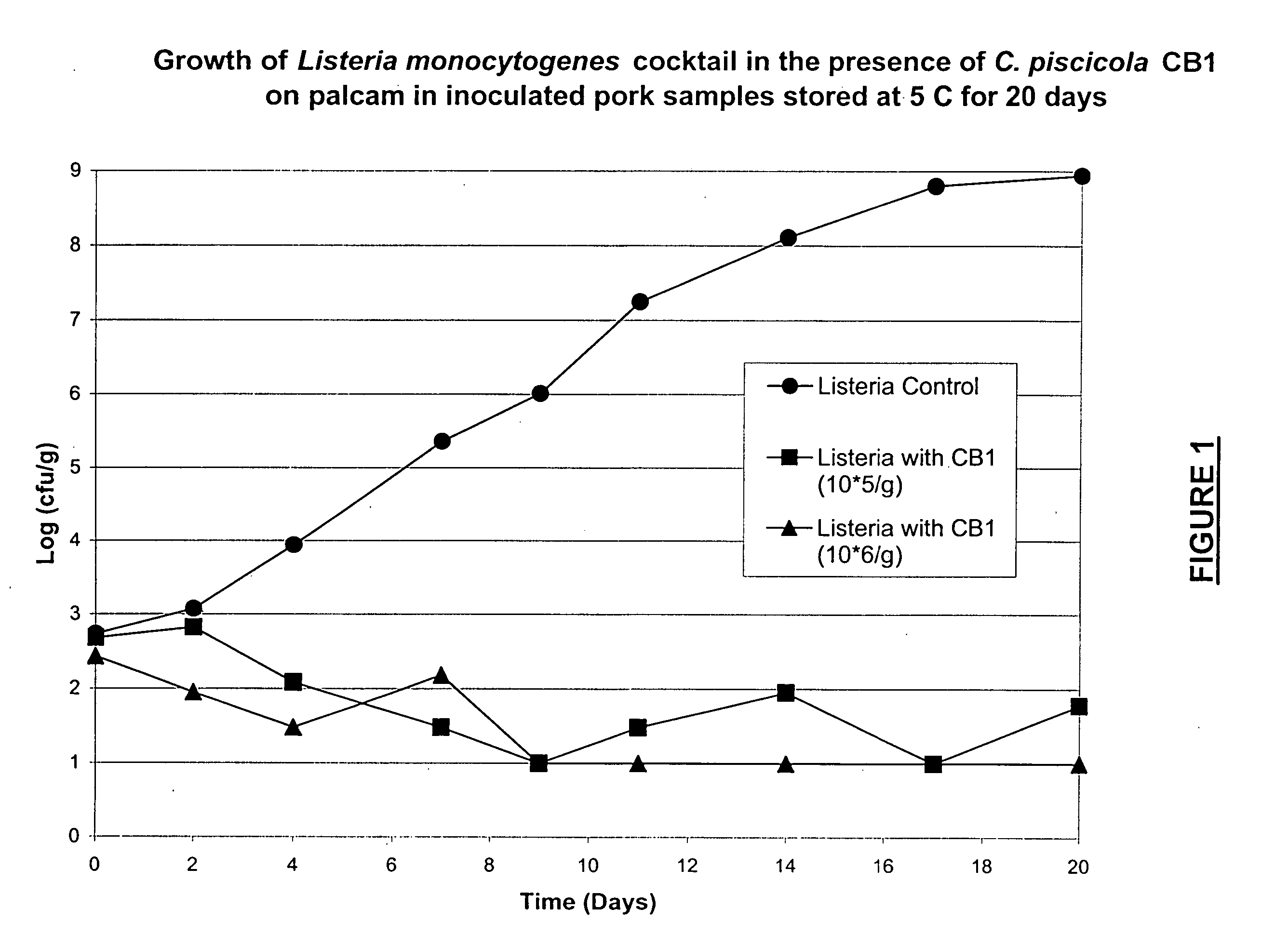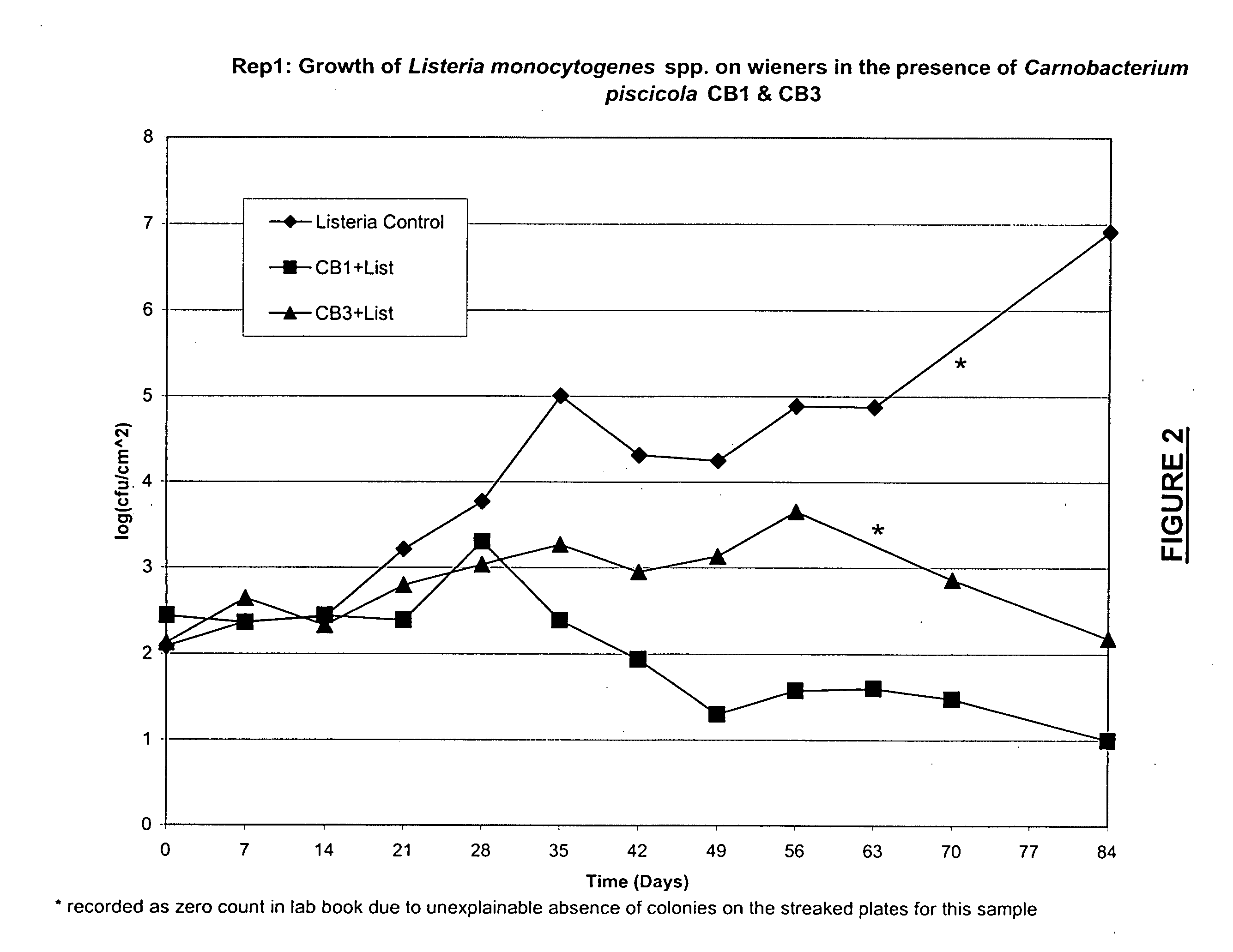Lactic acid bacteria for the treatment of food
a technology of lactic acid bacteria and food, which is applied in the field of carnobacterium strains for the treatment of food, can solve the problems of maltaromaticum /i>, which is susceptible to proteolytic enzymes, and the production of bacteriocins, and achieves the effect of not causing significant spoilage of meat, and unprecedented anti-listerial activity
- Summary
- Abstract
- Description
- Claims
- Application Information
AI Technical Summary
Benefits of technology
Problems solved by technology
Method used
Image
Examples
example 1
[0039] Collins et al. (1987) reported that L. piscicola, L. divergens and L. carnis synthesize the major C18:1 isomer as oleic acid (Δ9,10), indicative of a different unsaturated fatty acid synthase pathway. Genetic homology classifications and chemical as well as physical characteristics also placed L. piscicola, L. carnis and L. divergens in the same DNA homology group. In addition, biochemical and chemical data indicated that L. piscicola and L. carnis should be (and were) reduced to the same species, L. piscicola. L. piscicola, along with L. ivergens, were then re-classified into a new genus, Carnobacterium (L. gen. N. carnis, of flesh; Gr. dim. n. bakterion, a small rod; M.L. neut. N. Carnobacterium, flesh rodlet) by Collins et al. (1987). This was further substantiated when a 16S rRNA sequence analysis demonstrated that the Carnobacterium genus forms a distinct phylogenetic clade4 within the lactic acid bacteria and included C. funditum, C. alterfunditum, C. gallinarum and C. ...
example 2
[0041] Naturally-occurring C. maltaromaticum historically belongs to a group of LAB that metabolize glucose heterofermentatively to produce equimolar amounts of lactic acid, carbon dioxide and ethanol or acetic acid from sugars and was previously included in the genus Lactobacillus (Stanier et al., 1957; Hiu et al., 1984). Although some research has indicated that Carnobacterium spp. are homofermentative for L-lactate [with acetate, formate and CO2 being produced as end-products of some secondary decarboxylation / dissimilation reactions of pyruvate (Hiu et al., 1984; De Bruyn et al., 1988)], the most recent description and characterization of C. maltaromaticum states that L(+)-lactic acid, ethanol and acetate are produced heterofermentatively (Mora et al., 2003). Therefore, for this example, C maltaromaticum has been characterized as having heterofermentative properties. C. maltaromaticum was found frequently in fish that had suffered some form of stress, such as that which occurs at...
example 3
[0062] The strains specified in this GRAS document (e.g., Carnobacterium maltaromaticum strains CB1, CB2, CB3, LV17, UAL26, ATCC 35586 AND ATCC43225) have been tested for their resistance to 27 antibiotics (Table 3; Griffiths Labs, 2004). Overall, the C. maltaromaticum strains tested were sensitive to amoxicillin+clavulanic acid, chloramphenicol, ciprofloxacin, erythromycin, gentamicin, imipenem, netilmicin, rifampin, tetracycline and tobramycin. In viewing the antibiotic resistance profiles (Table 3), the Carnobacterium strains are sensitive to those major antibiotics that are commonly associated with transferable genetic elements in grampositive commensal bacteria; specifically, erythromycin, chloramphenicol and tetracycline. Borriello et al. (2003) suggested that when used as probiotics, selected strains should be susceptible to greater than two major antibiotics. A comparison with the antibiotics used by Baya et al. (1991), Duffes et al., (1999b) or Euzeby (2004) indicate that t...
PUM
 Login to View More
Login to View More Abstract
Description
Claims
Application Information
 Login to View More
Login to View More - R&D
- Intellectual Property
- Life Sciences
- Materials
- Tech Scout
- Unparalleled Data Quality
- Higher Quality Content
- 60% Fewer Hallucinations
Browse by: Latest US Patents, China's latest patents, Technical Efficacy Thesaurus, Application Domain, Technology Topic, Popular Technical Reports.
© 2025 PatSnap. All rights reserved.Legal|Privacy policy|Modern Slavery Act Transparency Statement|Sitemap|About US| Contact US: help@patsnap.com



